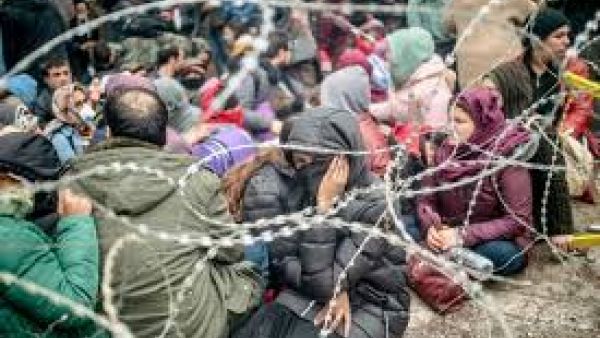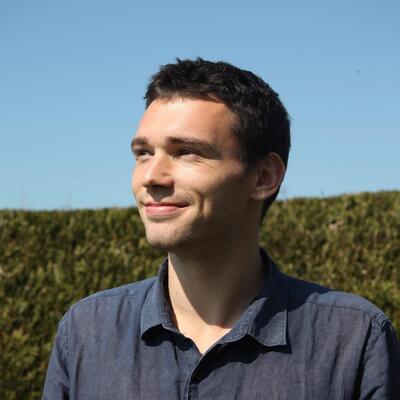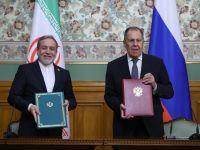This is Part II of a series on refugees and COVID-19. For Part I please see here.
The conditions created from an extended focus on refugees opting to voluntarily return to their homes are inhuman at any time. But at a time of an epidemic, they are disastrous, for those living in the camps and for people whose governments have created the conditions for refugees in the first place.
On the 13 March this year, Médecins Sans Frontières (MSF) wrote a letter to the UK Home Secretary, Priti Patel, asking her to urgently increase the number of child refugees transferred to the UK. There was no reply for over two weeks until the Foreign Office said that the UK would aim to uphold the EU-Turkey deal, which works toward preventing asylum seekers from entering Europe. Vickie Hawkins, executive director of MSF UK said that the EU-Turkey deal “traps thousands of people – many of them children or deeply vulnerable – in squalid conditions on the Greek islands.”
The EU-Turkey deal was an agreement that meant refugees arriving in the EU, usually Greece, were sent back to Ankara. In return, the EU would agree to transfer someone into the EU from Turkey on a one-for-one basis. The deal also promised to push for Turkey’s eventual entrance into the EU and promised a cash injection into Turkey, half of which was put aside to assist with the cost of hosting refugees.
Vickie Hawkins, executive director of MSF UK said that the EU-Turkey deal “traps thousands of people – many of them children or deeply vulnerable – in squalid conditions on the Greek islands.”
But Turkey announced on the 28 February this year that it would no longer abide by the 2016 EU-Turkey deal. After accusing the EU of failing to provide the promised financial support, up to 35,000 migrants had gathered on the Greek border in the period of two weeks. The historical focus on voluntary repatriation has meant these people, together with the millions elsewhere, are living in a limbo; unable to settle and finding it too dangerous to go home.
The five Greek islands with holding facilities are six times over their maximum capacity. Charities have urged for the decongestion of the most squalid camp, including Moria on the island of Lesbos, in order to help mitigate the spread of COVID-19. Numerous European governments have offered to help by transferring 2,000 young people from the islands. The UK declined to take any extra people.
Sidsel Aas from the refugee charity A Drop in the Ocean, told Al Bawaba that “the Moria camp in Lesbos was built for 3,000 people but is now housing 20,000 people. This makes it difficult to take the precautions we are being told to take; to keep distance, to wash hands, to avoid hands. Of course, this is impossible in such a camp. Also, there is about 1800 people have to share one tap of water which makes it difficult to wash your hands.
Sidsel Aas from the refugee charity A Drop in the Ocean, told Al Bawaba that “the Moria camp in Lesbos was built for 3,000 people but is now housing 20,000 people. This makes it difficult to take the precautions we are being told to take; to keep distance, to wash hands, to avoid hands.
“If the virus should come to the camp it would be devastating because there is no way you can keep people apart. The other thing is that a lot of the people there have underlying illnesses so they would be badly affected by the virus,” Aas says.
Elsewhere in Europe, there is a small camp that symbolizes the limbo people have been left in due to government policies of waiting for voluntary repatriation. In northern France, approximately 2,100 individuals are seeking asylum in the UK by attempting to cross over from France. In response, we have seen a typical Anglo-French policy that assumes migrants will return to their home countries. A 1km border wall has been erected to prevent people from hiding in lorries crossing the Channel, amongst other measures. More than $21m has been spent on these security measures to date.
The focus on containment and hard conditions mean that now COVID-19 has arrived in the refugee camps, which are mostly filled with people from Afghanistan, Eritrea, Iran, Iraq and Sudan, there is little hope of limiting the spread of the virus.
Clare Moseley, the founder of Care4Calais, a charity which provides aid and support for refugees in Calais and Dunkirk, told Al Bawaba that “the virus itself arrived quite late in the camp. What we’re worried about is that, now it is in the camp with the overcrowding and lack of sanitation, that’s very bad conditions for the spread of the virus. It’s impossible to social distance because people are sharing tents, people are cooking together, they don’t have running water.
“What they’ve been doing in Calais is fencing off, fencing off, and fencing off the land. That means that people are pushed into small places. The strategy of the last two years has been to fence off absolutely everywhere people can stay but now that strategy has really turned out to be a really, really bad thing because everyone is extremely close together,” said Clare.
The strategy of the last two years has been to fence off absolutely everywhere people can stay but now that strategy has really turned out to be a really, really bad thing because everyone is extremely close together
In the Middle East and Central Asia refugees are on the move. The fear of COVID-19 in Iran has forced more than 130,000 Afghans to travel back home to Afghanistan. This has caused concern amongst the international health community that the virus could be being carried across the border.
Afghan refugees in Pakistan have found the lockdown near impossible due to the lack of support from either the Pakistani or Afghani governments. An activist who had recently visited the Khyber Pakhtunkhwa camp told the news agency MENAFN that those in the camp had not heard from the UNHCR either. Afghan refugees are not eligible for aid under the Pakistani aid under Benazir Income Support Program or Ehsaas Programmes and this leaves them struggling for substance in Pakistan.
After the Second World War wealthy nations accepted at least 1.6 million displaced persons from other countries.
The perils which are now faced by millions of refugees around the world are man-made and not natural. It is always worth asking the counterfactual question: what if countries were more willing to take in peoples who have faced conflict and persecution?
After the Second World War wealthy nations accepted at least 1.6 million displaced persons from other countries. Economies were ravaged and populations traumatized from years of war. Continuing with an international strategy, however much it might please right-wing governments the world over, leaves million today more vulnerable to viral outbreaks, economic uncertainty, and social welfare.
This is Part II of a series on refugees and COVID-19. For Part I please see here.









